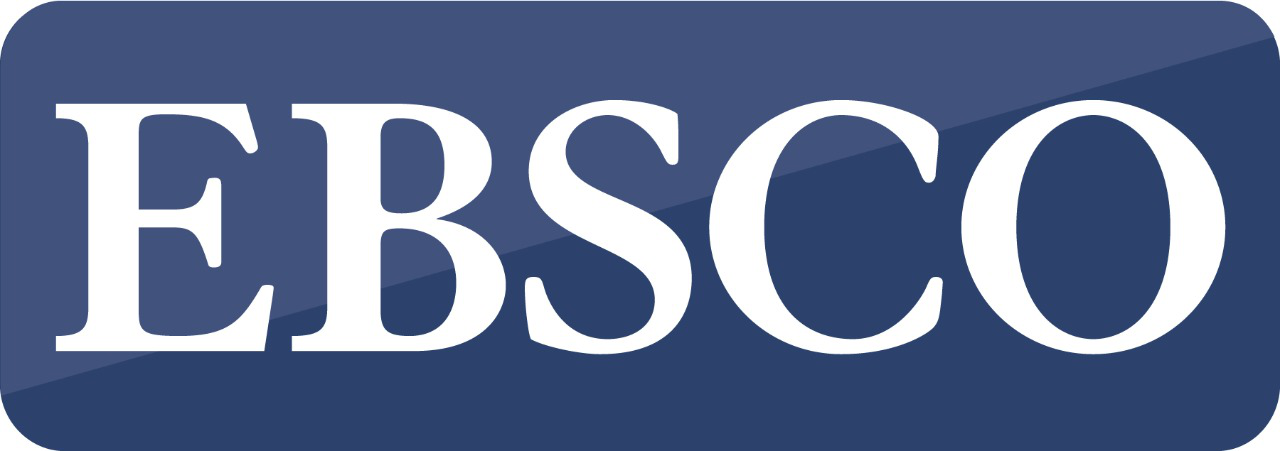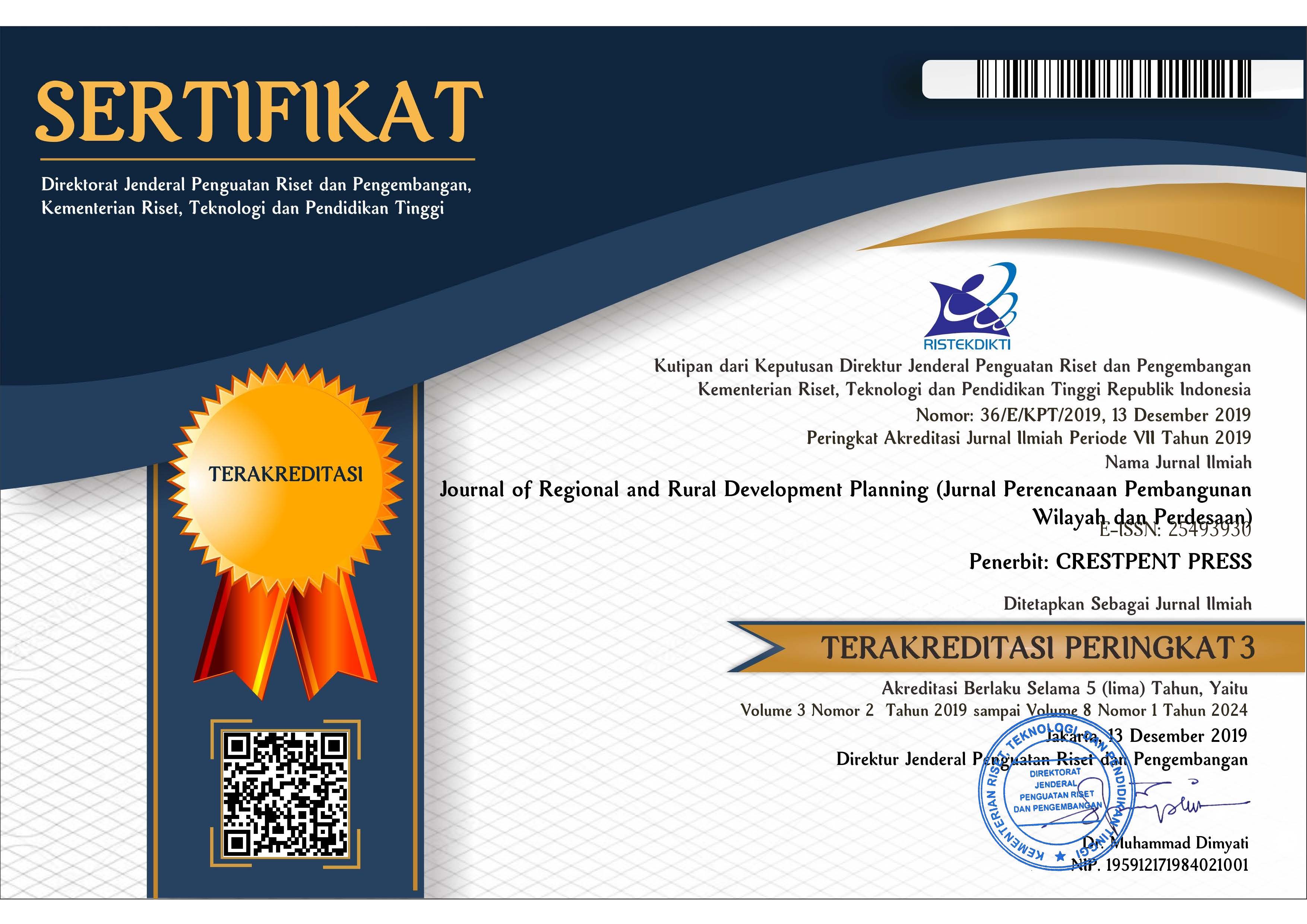Indonesia Transport Loan Projects: Development Outcome Attributions (DOA) on Unemployment, Growth, and Poverty
DOI:
https://doi.org/10.29244/jp2wd.2024.8.1.54-75Keywords:
banking, development aid, growth, loans, poverty, transport, unemploymentAbstract
Our goal was to investigate the effects of international development banks' foreign exchange loan-funded transportation projects. We examined the effects and efficacy of Indonesia's transport loan projects, which were supported by the World Bank and the Asian Development Bank (ADB), to achieve this, 67 projects of $8.85 billion in value were undertaken between 1972 and 2020. This study is significant because it is the first in the history of development assistance—after 100 years—that is based entirely on banking theories and practices, employing attribution techniques and presuming that all loans will be disbursed into Indonesia's economy. Nevertheless, the effectiveness narratives are untrue because—after being converted into Rupiah—less than 10% of the loan fund made it to Indonesia's economy. According to our analysis, the loans from both banks decreased growth by 200% and increased poverty by 220%, even if they were successful in providing jobs. The disbursement delays of five to seven years result in capital outflows of more than $26 for every $1 loan. Fixing this necessitates a 100% payout in Rupiah into Indonesia's national banking systems the same year that the loan agreements are executed.
References
Aldashev, G., and Vincenzo, V. (2012). Is Aid Volatility Harmful? The University of Namur, 2012. https://www.tcd.ie/Economics/assets/pdf/AID_VOLATILITY_Draft_Jan8_2012_FULL.pdf (5 January 2022)
American Public Transportation Association (APTA). (2020). Economic Impact of Public Transportation Investment 2020 Update FEBRUARY 2020 Report Prepared for: American Public Transportation Association (APTA) Report Prepared by: Economic Development Research Group, an EBP Company APTA-econ-impact-transit-investment-2020-ES.pdf https://www.apta.com/wp-content/uploads/APTA-econ-impact-transit-investment-2020-ES.pdf
Andrews, M., and Wilhelm, V. 2008. Thinking about Aid Predictability. NUMBER 124, PREM Notes Poverty: The World Bank.
Asatullaeva, Z, Aghdam, RFZ, Ahmad, N, and Tashpulatova, L. (2021).The impact of foreign aid on economic development: A systematic literature review and content analysis of the top 50 most influential papers. Journal of International Development. 20 April 2021, Volume33, Issue4, May 2021, pp.717-751.https://doi.org/10.1002/jid.3543.
Australian National University (ANU). (2017). Aid study shows every $1 spent returns $7.10 in exports. 16 October 2017. https://www.anu.edu.au/news/all-news/aid-study-shows-every-1-spent-returns-710-in-exports. (5 January 2022)
Baum-Snow, N, J V Henderson, M Turner, Q Zhang and L Brandt. (2020). Does investment in national highways help or hurt hinterland city growth? Journal of Urban Economics 115: 103–24.
Bustan. (2015). Effect of Government Spending on Transportation Sector against Economic Growth and Income Distribution. Journal of Economics and Sustainable Development, Vol.6, No.24, 2015. https://iiste.org/Journals/index.php/JEDS/article/download/27924/28637
Denzin, N.K. (1978). The Research Act: A Theoretical Introduction to Sociological Methods. McGraw-Hill Books, New York.
Farquhar, J., Michels, N. and Robson, J. (2020). Triangulation in Qualitative Case Study Research: Widening the Scope. Industrial Marketing Management, https://doi.org/10.1016/j.indmarman.2020.02.001.
Fisher, I. (1896). What is Capital? The Economic Journal, 6(24), pp. 509-534. http://www.jstor.org/stable/2957184 (Accessed: 5 January 2022)
Global Financial Integrity (GFI) et al. (2015). Financial Flows and Tax Havens: Combining to Limit the Lives of Billions of People. https://secureservercdn.net/45.40.149.159/34n.8bd.myftpupload.com/wp-content/uploads/2016/12/Financial_Flows-final.pdf (5 January 2022)
Griffith, J. (2014). Developing countries lose $2 for every $1 they earn. Eurodad, 2020. 18 Dec 2014. https://www.euractiv.com/section/development-policy/opinion/developing-countries-lose-2-for-every-1-they-earn/?fbclid=IwAR1-sYzJR0cWMFVtBiaBOuSe3Kp3RWqtlW70wG8f8mgJoGYvl7e4qxTItmU (5 January 2022)
Hickel, J. (2017). Aid in reverse: how poor countries develop rich countries. The Guardian, 14 January 2017. https://www.theguardian.com/global-development-professionals-network/2017/jan/14/aid-in-reverse-how-poor-countries-develop-rich-countries (5 January 2022)
Hudson, M. (2019). Michael Hudson Discusses the IMF and World Bank: Partners In Backwardness. Naked capitalism. https://www.nakedcapitalism.com/2019/07/michael-hudson-discusses-the-imf-and-world-bank-partners-in-backwardness.html (5 January 2022).
Hudson, M. J. 2018. Palatial Credit: Origins of Money and Interest. https://michael-hudson.com/2018/04/palatial-credit-origins-of-money-and-interest/ (25 January 2021)
Ingratubun, M. 2021. Dutch Curse on Indonesia: When poverty charges more poverty. Academia Letters, Article 863. https://doi.org/10.20935/AL863.
Ingratubun, M. A. 2020. (Unpublished) Tracking Effectiveness of Loan Funds (Aid) (TEA) through Development Outcomes Attribution (DOA) on Bank Outlays Growth On-development Results (BOGOR). Case Study: Indonesia Loans from the Asian Development Bank (ADB). Bogor, 2020, Indonesia.
Jakab, Z., and Kumhof, M. (2015). Banks are not intermediaries of loanable funds – and why this matters. Bank of England. Working Paper No. 529, 2015, May.
Jarotschkin, A. and Kraay, A. (2016). Aid, Disbursement Delays, and the Real Exchange Rate. International Monetary Fund. IMF Economic Review, Vol. 64, No. 2. DOI:10.1057/imfer.2015.7.
Jepma, C. J. (1991). The tying of aid, Paris, OECD.
Kanbur, R. (2000). Aid, Conditionality, and Debt in Africa, in F. Tarp (ed.), Foreign Aid and Development: Lessons Learnt and Directions for the Future, London and New York: Routledge, 2000, 409-22.
Keen, S. (2014). Endogenous money and effective demand. Review of Keynesian Economics, 2 (3), Autumn 2014, pp. 271–291.
Keyness, JM. (1933). National Self-Sufficiency. The Yale Review, Vol. 22, no. 4 (June 1933), pp. 755-769.
Khaldun, I. 1377. The Muqaddimah: An Introduction to History. Translated by Franz Rosenthal (1969). https://asadullahali.files.wordpress.com/2012/10/ibn_khaldun-al_muqaddimah.pdf (25 January 2021)
Koster, H; Tabuchi, T, and Thisse, J.F. (2021). High-speed rail may hurt intermediate places: The role of long-haul economies. VoxEU.org, 9 May. https://voxeu.org/article/how-highways-shape-regional-disparities?utm_source=dlvr.it&utm_medium=twitter (5 January 2022)
Lanzalot, M. L., Maffioli, A., Stucchi, R., and Yanez-Pagans, P. (2018). Infrastructure investments and private sector catalyzation: The case of the Panama Canal expansion. Technical Note 9, Inter-American Investment Corporation, Washington DC.
Link 2007 and Social Value Italia. (2018). Evaluating The Impact of International Development Cooperation. A methodological proposal. Link2007, available online: https://www.coopi.org/uploads/home/15b477011a840f.pdf (Accessed 30 Oct 2020)
Lotti, G., and A. Presbitero. (2019) The mobilization effects of multilateral development banks. https://voxeu.org/article/mobilisation-effects-multilateral-development-banks (5 January 2022)
Mazzi, B. (2013) Treasury Finance and Development Banking. A Guide to Credit, Debt, and Risk. New Jersey, USA: John Wiley & Sons, Inc.
McLeay, M., Radia, A. and Thomas, R. (2014). Money creation in the modern economy. Bank of England. Quarterly Bulletin, Q1, pp.14-27.
Moore, B.J. (1983). Unpacking the Post Keynesian Black Box: Bank Lending and the Money Supply. Journal of Post Keynesian Economics, 5(4): 537–556.
Myrdal, G. (1954). Economic Theory and Underdeveloped Regions. London: University Paperbacks, Methuen., 1957.
Nichols, D. M. (1994). Modern Money Mechanics. A Workbook on Bank Reserves and Deposit Expansion. 1st published in 1961. The last revision was by Anne Marie L. Gonczy (1992). Chicago, IL, U.S.: Federal Reserve Bank of Chicago.
OECD. (2002). Glossary of Key Terms in Evaluation and Results Based Management, Reprinted in 2010, available online: https://www.oecd.org/development/peer-reviews/2754804.pdf (5 Jan 2022)
Powell, Eileen Alt. (2005). Some 600,000 joined millionaire ranks in 2004, Associate Press, June 9, 2005.
Puri A., Aladysheva A., Iversen V., Ghorpade Y., Brück T., (2015), What methods may be used in impact evaluations
of humanitarian assistance? IZA DP No. 8755, available online: http://ftp.iza.org/dp8755.pdf (5 January 2022)
Smith, A. (1998). The Wealth of Nations. Oxford University Press.
Soddy, F. (1926). Wealth, Virtual Wealth and Debt: The Solution of The Economic Paradox. London: Allen and Unwin.
US Congress. (1968a & 1968b). Appropriation for 1969. House of Representatives. 9th Congress, Second Session, Part 1 (94-105), pp.264-324 and Part 2 (94-955) - Economic Assistance, pp.25-39, available online: https://www.govinfo.gov/content/pkg/CHRG-90hhrg94105p1/pdf/CHRG-90hhrg94105p1.pdf and https://www.govinfo.gov/content/pkg/CHRG-90hhrg94955p2/pdf/CHRG-90hhrg94955p2.pdf (Accessed: 25 Aug 2020).
Werner, R. A. (2014). Can banks individually create money out of nothing? The theories and empirical evidence. International Review of Financial Analysis, 36, pp.1-19.
Werner, R. A. 2016. A lost century in economics: Three theories of banking and the conclusive evidence. International Review of Financial Analysis, 46, pp.361-379.
Werner, R.A. (2015). Shifting from Central Planning to a Decentralised Economy. Paper presented at the 14th Rhodes Forum: Dialogue of Civilisations Research Institute, Panel 2: Economic Alternatives when Conventional Models Fail, Rhodos, Greece, on 1 October 2016 and at the 4th European Conference on Banking and the Economy (ECOBATE 2016), in Winchester Guildhall, Winchester UK, on 12 October 2016.
Witular, R. A. (2016). Asian Development Bank to reform project delivery, cut delays. The Jakarta Post (Fri, May 6, 2016). https://www.thejakartapost.com/news/2016/05/06/asian-development-bank-to-reform-project-delivery-cut-delays.html (25 January 2021)

















.png)




